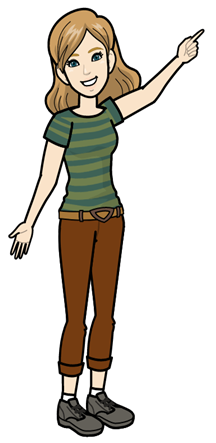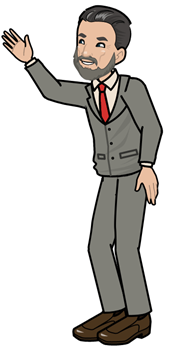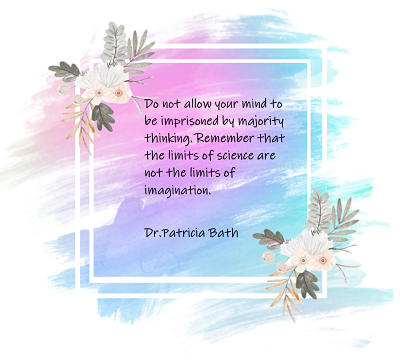I. When do we use it?

The past continuous, also known as past progressive, is used to talk about an action that was in progress, in a definite time in the past, when another action interrupted it. Here, the word WHEN is used to introduce that second action in the past. For instance:
- My cousin Olivia was shopping when her boyfriend called her up.
- Sheila was eating with her friends when we saw her at the restaurant.
- The kids were attending a biology class when the lights went out.
- My history teacher was opening the window when Tom, our youngest classmate, fell down.
- My little sister Jane was studying in the living room when the doorbell rang.
[ past continuous] + [simple past]
Notice that the overlapping action or the action that interrupted the one that was in progress should be written in the simple past tense.
II. ARE THERE ANY MORE USES?

Yes. Another common use of the past continuous tense is to talk about two actions that were in progress simultaneously. In those cases, we will use the connector WHILE to describe the two actions in progress at the same time. Here are some examples:
A: What were you and Harvey doing at around 6.00 PM yesterday?
B: Harvey was showering while I was cooking something for dinner.
[ past continuous] + [past continuous]
- The children were watching TV while Harvey was showering.
- Mom was cooking something for dinner while the kids were watching TV.
- Who was cooking??
Mom was.
- Who was showering?
Dad was.
- Who was watching TV?
The kids were.
- Who was reading?
Nobody was.
Notice that both actions are written in the past continuous tense. Now, in terms of the Past Continuous language pattern, look at this chart:

III. KEY POINTS TO KEEP IN MIND
3.a) Punctuation Rules. If the “when-clause” or the “while-clause” is used at the beginning of the sentence, use a comma after it. For example:
- When you left to school, I was driving to pick you up.
- While Richard was working in his studio, his wife was taking an online course.
3.b) Punctuation Rules. If the time clauses with “when” and “while” are used in the middle of the sentence, then you DON’T use a comma. Examples:
- Pauline was raking the leaves when her mom called.
I was doing a little cleaning while my husband was gardening
IV. MORE EXAMPLES TO CONCLUDE
Now, take a peek at some more examples of the past continuous in the affirmative, negative and interrogative forms, with the use of WHEN and WHILE.

4.a) SIMULTANEOUS ACTIONS IN THE PAST:
[ past continuous] + [past continuous]
-
- While you were working, I was taking care of your Mom.
- Karen was cooking while her children were playing in the garden.
- Jason was riding his bike while his parents were watching him.
- While it was raining, I was having a nice cup of coffee.
4.b) ACTION IN PROGRESS IN THE PAST WHEN INTERRUPTED BY ANOTHER ACTION:
[ past continuous] + [ simplepast ]
-
- When James phoned Olivia this morning, she was shopping.
- My parents were traveling when our sister Cynthia´s baby was born.
- What were you doing when your little daughter fainted?
- Who was Sheila talking to when you saw her?
What were they doing when their friends arrived?
V. CONSOLIDATION
VI. EXERCISE
LANGUAGE USE PRACTICE
PAST CONTINUOUS WITH WHEN & WHILE
Choose a, b or c to complete the following sentences correctly.
VII. READING COMPREHENSION AND VOCABULARY BUILDING

PATRICIA BATH BIOGRAPHY(1942–2019)
Patricia Bath was the first African American to complete a residency in ophthalmology and the first African American female doctor to receive a medical patent. She invented the Laserphaco Probe for cataract treatment in 1986.
(SUBHEADING 1)
Patricia Bath was the first African American to complete a residency in ophthalmology in 1973. Two years later, she became the first female faculty member in the Department of Ophthalmology at UCLA's Jules Stein Eye Institute. In 1976, Bath co-founded the American Institute for the Prevention of Blindness, which established that "eyesight is a basic human right." In 1986, Bath invented the Laserphaco Probe, improving treatment for cataract patients. She patented the device in 1988, becoming the first African American female doctor to receive a medical patent.
(SUBHEADING 2)
Patricia Era Bath was born on November 4, 1942, in New York City's Harlem neighborhood to Rupert Bath, the first Black motorman for the New York City subway system, and Gladys Bath, a housewife and domestic worker who used her salary to save money for her children's education. Bath was encouraged by her family to pursue academic interests. Her father, a former Merchant Marine and an occasional newspaper columnist, taught Bath about the wonders of travel and the value of exploring new cultures. Her mother piqued the young girl's interest in science by buying her a chemistry set.
As a result, Bath worked hard on her intellectual pursuits and, at the age of 16, became one of only a few students to attend a cancer research workshop sponsored by the National Science Foundation. The program head, Dr. Robert Bernard, was so impressed with Bath's discoveries during the project that he incorporated her findings in a scientific paper he presented at a conference. The publicity surrounding her discoveries earned Bath the Mademoiselle magazine's Merit Award in 1960.
After graduating from high school in only two years, Bath headed to Hunter College, where she earned a bachelor's degree in 1964. She then attended Howard University to pursue a medical degree. Bath graduated with honors from Howard in 1968, and accepted an internship at Harlem Hospital shortly afterward. The following year, she also began pursuing a fellowship in ophthalmology at Columbia University. Through her studies there, she discovered that African Americans were twice as likely to suffer from blindness than other patients to which she attended, and eight times more likely to develop glaucoma. Her research led to her development of a community ophthalmology system, which increased the amount of eye care given to those who were unable to afford treatment.
(SUBHEADING 3)
In 1973, Bath became the first African American to complete a residency in ophthalmology. She moved to California the following year to work as an assistant professor of surgery at both Charles R. Drew University and the University of California, Los Angeles. In 1975, she became the first female faculty member in the Department of Ophthalmology at UCLA's Jules Stein Eye Institute
In 1976, Bath co-founded the American Institute for the Prevention of Blindness, which established that "eyesight is a basic human right." By 1983, Bath had helped create the Ophthalmology Residency Training program at UCLA-Drew, which she also chaired—becoming, in addition to her other firsts, the first woman in the nation to hold such a position.
(SUBHEADING 4)
In 1981, Bath began working on her most well-known invention: the Laserphaco Probe (1986). Harnessing laser technology, the device created a less painful and more precise treatment of cataracts. She received a patent for the device in 1988, becoming the first African American female doctor to receive a patent for a medical purpose. She also held patents in Japan, Canada and Europe. With her Laserphaco Probe, Bath was able to help restore the sight of individuals who had been blind for more than 30 years.
In 1993, Bath retired from her position at the UCLA Medical Center and became an honorary member of its medical staff. That same year, she was named a "Howard University Pioneer in Academic Medicine." Among her many roles in the medical field, Bath was a strong advocate of telemedicine, which uses technology to provide medical services in remote areas. Unfortunately, Bath died on May 30, 2019, in San Francisco, California.
PRACTICE I.
PRACTICE II.
Choose the correct answer to complete the following sentences correctly.
PRACTICE III.
BIBLIOGRAPHY
Azar, B. S., Azar, D.A., & Koch R.S. (2009). Understanding and Using English Grammar. Longman.
Barker C. and Mitchell, L. (2004). Mega 1 (First Ed.). Macmillan Publishers.
Hewings, M. (2013) Advanced Grammar in Use with Answers: A Self-Study Reference and Practice Book for Advanced Learners of English. CUP
Murray, L. (2014) English Grammar. Cambridge University Press.
WEB RESOURCES
Images 1,2 & 3 _ Personal subscription to Pixton
REFERENCES
Chart 1_Own source .
Image_ Chart 1_https://www.freepik.es/vector-gratis/hombre-negocios-haciendo-diferentes-acciones_2881131.htm#query=businessman&position=5&from_view=search
CREDITS
- (2021) Practice exercise written by Connie Reyes_Language Department at ENES-LEON UNAM
- Audio version performed by Sally and Matthew_Voicemker_Text to Speech Converter_Connie Reyes 2022 Subscription
- (2021) Practice exercise written by Connie Reyes-Cruz_Language Department at ENES-LEON UNAM
- Citation information: Biography.com Editors. Website name: The Biography.com website. Article Title: Patricia Bath Biography. Published on April 2, 2014. Text retrieved from https://www.biography.com/scientist/patricia-bath
- (2021) Practice exercise written by Connie Reyes-Cruz_Language Department at ENES-LEON UNAM
- Audio version performed by Sally / Matthew_Voicemaker_Text to Speech Converter_Connie Reyes-Cruz 2022 Subscription
- Free stock photos _ https://www.freepik.es/vector-gratis/guirnalda-floral-rosa-acuarela-circulo dorado_15967283.htm#query=flores&position=1&from_view=keyword. Quotation by Patricia Bath.